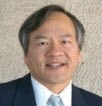The Modernization Controversy
By Janlee Wong
Three years in the planning and implementation stage, NASW’s Modernization and Revitalization Plan started Phase 1 of implementation July 1, 2016. Since it’s in the early planning stages, Modernization has been controversial and many leaders and members are opposed to it.
Opponents have cited a number of reasons for their opposition ranging from an assault on the democratic processes of the Association to the cost of Modernization. There are real objections to centralizing accounting and audit functions in the National Office as well as placing all NASW employees (chapter and national) under one Human Resources Administration.
Other concerns have focused on the clarification of the power and authority of chapter boards of directors. For decades some have assumed that each chapter is separately incorporated as their own association under law and therefore they are autonomous and not accountable to the National Board of Directors and the National Office.
While the goals of Modernization are to put “members first” and to re-energize NASW as one association, opponents see it as a “hostile takeover” and detrimental. Unable to convince the National Board of Directors to abandon Modernization, opponents have enlisted attorneys to initiate court action to block implementation.
Few members see the broad whole picture of what is happening to associations in general and NASW in particular. When I first started with NASW more than 20 years ago, the Chapter had nearly 12,000 members. We are now at 10,000. Membership has declined steadily for the past two decades. While some attribute this to a poorly run association by its leaders, that doesn’t explain why for most associations membership has been in decline. Others have cited a change in culture from the beginnings of NASW where membership was something professionals did to the current culture where professionals question what value am I getting for my membership.
Modernization is an attempt to restate what the purpose of NASW is in very broad terms. It attempts to address the issue of value by creating more efficient administrative processes to allow NASW staff especially at the chapter level to focus on creating and bringing more value to members. Many opponents dispute this pointing out that the transition cost is substantial and in fact is detrimental to chapter staff and services.
If a large chapter employs accounting staff and auditors, Modernization might be a wash fiscally. However a small chapter whose executive director manages accounting on their own, might see using chapter resources to pay for accounting and audit in the National office as something they can’t afford.
If a large chapter and their staff are asked to pay for a better benefits plan including some benefits that are not available in the current chapter plan, the large chapter could probably afford it. If a small chapter is asked to pay for benefits where they had little or none before, they might feel that it’s unaffordable and not financially feasible.
These examples demonstrate the wide variation among chapters and therefore the disparities, unfairness and inequity that now exist. Going back to the original goal of Modernization to put “members first,” members in a small chapter are to receive different and fewer services than members in a large chapter. The goal then is to reduce and someday eliminate these disparities.
Accounting, audit and human resources are the first attempts to level the playing field for all chapters so that all chapter staff can be freed from some accounting duties and receive a good standardized benefit plan. The challenge is significant on the fiscal side. That highlights how uneven and unfair the current situation where some chapter staff receive unequal pay and benefits for the same work.
Some of the original ideas behind Modernization (that weren’t adopted) include a transition fund and a program development fund. These two funds would address the current fiscal problems with the Plan but they would require the sharing of funds and collaboration among chapters. Something that is in short supply right now. NASW has been operating such a fund for decades where 3 percent of all dues is allocated to a Chapter Development Fund (CDF) and disbursed to “CDF” chapters (1,000 or fewer members). Because the amounts are so small and the fund hasn’t been updated in decades, it’s no longer for “development” but an insufficient subsidy for operations.
Some think that if we as an association want to arrest the decline in members and resources, we need to think big. Modernization is thinking big by making NASW a leaner and more efficient Association. Others feel that big is “top down” and driving members away from NASW.
To find out more about Modernization, all members are encouraged to visit the Modernization website at socialworkers.org/AboutNASW/Governance (member user ID and password needed). Members may want to call me at (916) 379-7604 with questions or for more information as the subject is complex and complicated.












